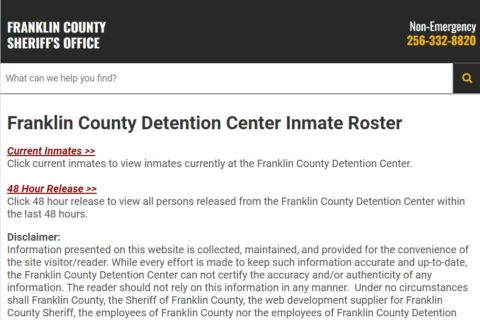Reportedly, Solitary Confinement in the United States prisons and jails has been indicated by an extensive body of research to have dangerous and often long-lasting negative effects on people who are held there. However, Solitary Confinement leads people to suffer mental issues.
Many people think that Solitary Confinement is used only for prisoners who have conducted dangerous acts of violence, in fact that violence is basically not the most common reason which people are sent for Solitary Confinement. However, there are a number of reasons why prisoners get put in Solitary Confinement.

If you’re looking for information about it, you can dive into our post below. Here you go!
Reasons Why Prisoners Get Put in Solitary Confinement
According to Vera Institute of Justice (Vera), prisoners are often sent to restrictive housing in response to low-level and nonviolent misbehaviours, since they really need protection, because of custody or risk assessment or since prison staff misinterpret their symptoms of mental illness as acts of defiance or rule-breaking.
Vera, through the Safe Prisons, Safe Communities: From Isolation to Dignity and Wellness Behind Bars Project, partnered with 8 state prison systems.
It found the fact that two local jail systems from 2015 to 2018 analyzed their use of restrictive housing and suggested reforms to significantly decrease that use. One focus of the assessments was the types of behaviours which lead to disciplinary infractions and finally result in someone’s placement in restrictive housing.
Basically, solitary confinement covers responding to a wide range of behaviours, not only used in response to the most dangerous behaviours. It includes low-level and nonviolent misbehaviours and to manage vulnerable populations including prisoners who are experiencing symptoms of mental illness or requiring protective custody.
According to Vera, there are at least three causes why prisoners get out in Solitary Confinement:
-
- Restrictive housing for Solitary Confinement is not provided solely to punish serious and violent behaviour. In fact, the majority of prisoners are sent there for nonviolent infractions.
- Many prisoners with mental illnesses are placed in restrictive housing and it’s often as a result of behaviours related to mental illness.
- The prisoners who need protection are frequently put in restrictive housing.
Reportedly, a lot of prisoners with mental illnesses will be placed in restrictive housing, as a result of behaviours related to mental illness.
Why Are More Prisoners with Mental Illness Placed in Solitary Confinement?
In many jail systems, restrictive housing for solitary confinement has become the de-facto mental health unit for prisoners and of course, it could become a revolving door for people with mental health needs.
Many prisoners may find it harder to constantly comply with stringent prison rules. They may also be written up for disciplinary infractions which are related to symptoms of their illnesses. It definitely can lead to high rates of disciplinary write-ups and subsequent restrictive housing placements for this population.
For example, in Oregon, people with mental illnesses made up 83% of the 448 people who were written up for disciplinary infractions. Aside from that, the systems frequently explicitly punish self-harming or suicidal behaviours with restrictive housing and place those who are on suicide watch in restrictive housing cells.
In Louisiana, Nebraska, Nevada, and Oregon, prisoners could be punished for cutting or causing harm to themselves. In Utah, even though it was not allowed by policy, but over a two-year period, there were 71 incidents where suicide tries or self-harm were finally punished through the formal disciplinary process.
Of course, it led to people being confined to their cells, a sanction generally referred to as ‘punitive isolation’ or ‘cell restriction’ that results in conditions similar to restrictive housing. Of course, no recreation or yard time, no phone calls, no visits, no canteen and no work or programming.
Well, it is particularly concerning given the significant evidence that people with mental illnesses are especially susceptible to harm from the isolating environment of restrictive housing.
Is There an Alternative for Solitary Confinement?
According to some sources, alternative methods for solitary confinement is scrutiny of super-maximum security prisons and the institutionalization of solitary confinement.
Reportedly, the New York City Department of Correction transferred more seriously mentally ill prisoners in July 2013 to an internal facility, similar to a hospital psychiatric ward, for more intensive therapy.
Prisoners with less severe mental illness who break disciplinary rules are often restricted to solitary confinement, but with increased hours of therapy and a behavioural intervention program.
Another alternative is to deal with long-term prisoners by promoting familial and social relationships through the encouragement of visitations that may help increase morale. Of course, familial counselling and support will be helpful for inmates nearing the end of a long-term sentence which may exhibit signs of aggression. Of course, prison rules and discipline must be clear, rational and consistent, while inmates must be given objective goals to improve their situation.
By 2013m Maine decreased its then-full supermax solitary population by half and applied ‘informal sanctions’ of restricted privileges, rather than solitary as punishment for every sanction.
A 2013 report from Vera Institute of Justice praised Washington state’s use of alternative discipline to solitary and careful review and transition process when prisoners enter and leave solitary that started as a voluntary reform by prison officials 15 years prior.
Legality of Solitary Confinement
Solitary Confinement legality has often been challenged over the past sixty years as conceptions surrounding the practice have changed. Most of legal discussion about solitary confinement focuses on whether or not it constitutes torture, unusual or cruel punishment.
In contrast, international law has started to discourage solitary confinement’s use in penal institutions, opponents of solitary confinement have been less successful at challenging it within the United States legal system.
According to A 2005 law journal, America’s detention system is far below the basic minimum standards for treatment of inmates under international law and has led to international human rights concern. That said, solitary confinement in the United States contravene international treaty law, violate established international norms and don’t represent sound foreign policy.

A bookworm and researcher especially related to law and citizenship education. I spend time every day in front of the internet and the campus library.




